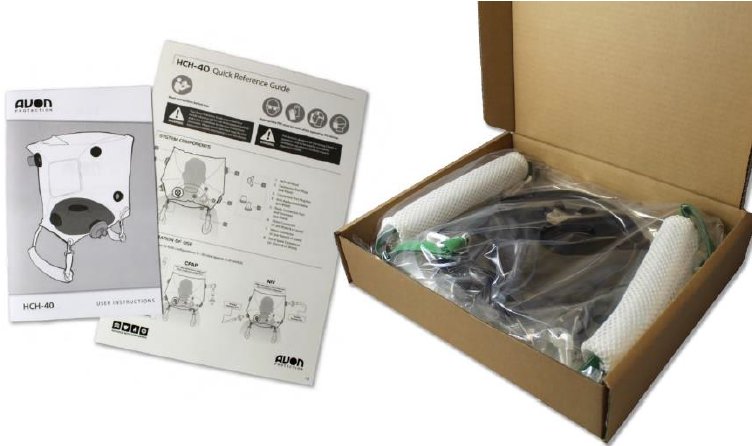Typically, patients have oxygen therapy delivered by a nose cup mask – a method that is said to waste large quantities of oxygen – and patients with severe symptoms are induced into an artificial coma and intubated in which a ventilator takes over the patients breathing. This is highly effective but is only used as a last resort due to its complex nature and invasiveness on the patient.
Working with Avon Protection Senior Design Engineer, Nick Hunter, Dominic helped develop the HCH-40 hood, which aims to provide an alternative to the invasive ventilation methods which require patient intubation.
The hood benefits patients with COVID-19 as it combines assisted breathing and oxygen therapy. It uses a ventilator to pressurise the hood with varying levels of oxygen-rich air, depending on the breathing needs of the patient.
The positive pressure inside the hood space pushes the oxygen-rich air into the patient’s lungs, significantly reducing the effort required to inhale.
The Loughborough student was involved in HCH-40 designing, prototyping, and testing – which involved conducting trials on healthy patients at University College London Hospital.
He was also involved in setting up production of the product as, following MHRA (Medicines and Healthcare products Regulatory Agency) approval, an order of 2500 units was placed.
The hoods have since been manufactured and distributed to various NHS Trusts as required.
Of the process and result, Dominic said:
“From the initial prototype to all units being delivered, it took three months.
“To take a product from initial concept to manufacture in three months was truly amazing for myself and the business, let alone one of such importance at a time of global desperation.”
He continued:
“One of the most memorable moments for me, was a visit where I got to see the sheer desperation of the medical staff who so urgently needed these devices for their patients.
“I hope the HCH-40 will provide those hospitalised due to COVID-19 with an alternative, less invasive, and more effective treatment plan.”
Nick Hunter, of Avon Protection, commented:
“Dominic played a key part in the design and development of the HCH-40 in this rapid project; notably in the initial research conducted with clinicians’ at UCL Hospital and in the refinement of the prototypes.
“I’m glad he got to experience working on a project from concept to manufacture and deliver a product which has the potential to save lives.
“I’m sure he’ll take a lot from this experience which will set him up well for his final year of study on his degree.”
